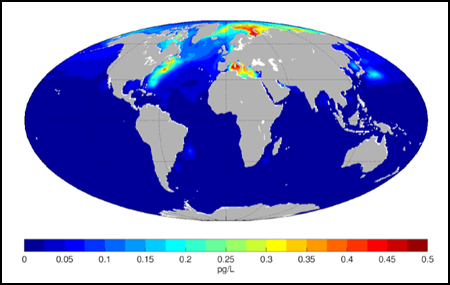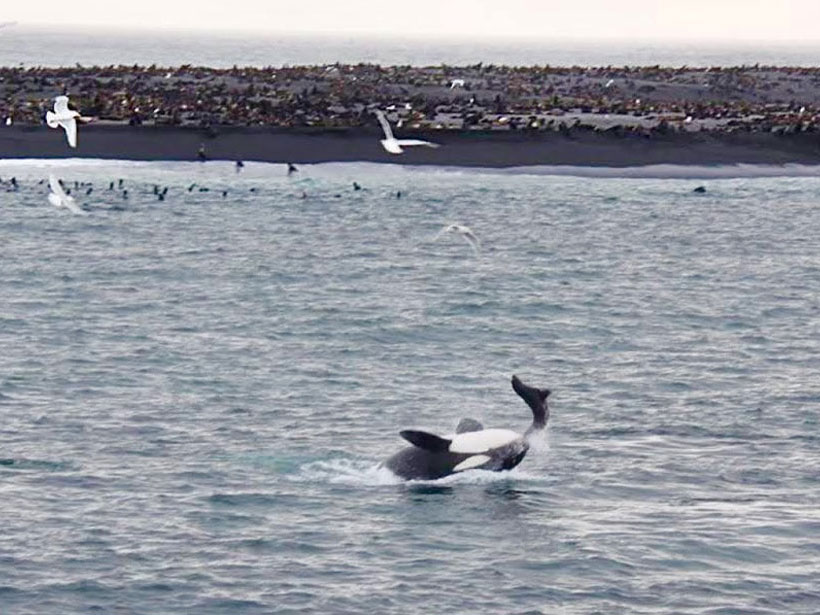Source: Global Biogeochemical Cycles
Polychlorinated biphenyls (PCBs) were introduced in 1929 for use in electrical equipment and for other industrial purposes. Used as coolants and lubricants, PCBs are a mixture of 209 chlorinated chemical compounds (known as congeners) that can take the form of oily liquids, solids, or vapors.
After decades of use, the world realized that these chemicals persist in the environment and concentrate in the food chain by sticking to the fatty tissues of animals—they are one of the original 12 persistent organic pollutants covered by the Stockholm Convention. After PCB emissions peaked around 1970, the compounds were globally banned in the late 1970s because of the threat they posed to both wildlife and humans. But PCB levels in marine wildlife are still high 40 years after the ban.
Wagner et al. investigated PCBs in the ocean using a 3-D global simulation model. The simulation was designed to help the researchers better understand how PCBs enter and leave the ocean and is based on the general circulation model from the Massachusetts Institute of Technology. The authors selected four congeners from a collection frequently measured by the International Council for the Exploration of the Sea. The compounds reflected a range of physiochemical properties.

The authors found that PCB concentrations in the upper ocean have declined by more than 90% since 1970. Nearly 75% of the reduction in PCBs in the ocean can be attributed to PCB burial in seafloor sediments, whereas the rest degraded in seawater or escaped to the atmosphere. The past few decades have seen PCBs circulate from the Northern Hemisphere to the Southern Hemisphere, resulting in an increase in the life span of PCBs in the ocean.
The findings suggest that in the coming years, climate change will have a significant impact on the life span and distribution of the chemicals. Changes to ocean circulation and sea ice cover could play a particularly important role. A reduction in sea ice could result in more congeners with higher molecular weights being deposited into the ocean while volatile compounds escape faster to the atmosphere. Additional changes in seawater temperature, light penetration, and biological productivity may also influence PCB concentrations. (Global Biogeochemical Cycles, https://doi.org/10.1029/2018GB006018, 2019)
—Aaron Sidder, Freelance Writer
Citation:
Sidder, A. (2019), A look at how long-banned PCBs persist in the ocean, Eos, 100, https://doi.org/10.1029/2019EO122359. Published on 07 May 2019.
Text © 2019. The authors. CC BY-NC-ND 3.0
Except where otherwise noted, images are subject to copyright. Any reuse without express permission from the copyright owner is prohibited.

